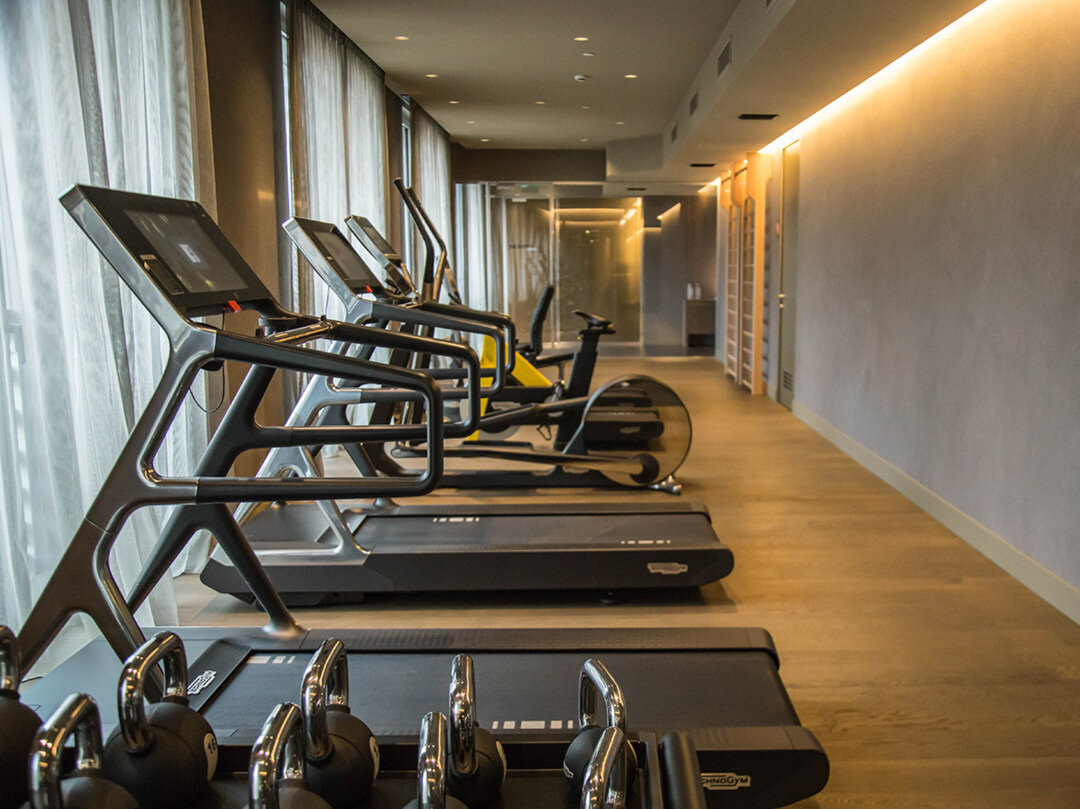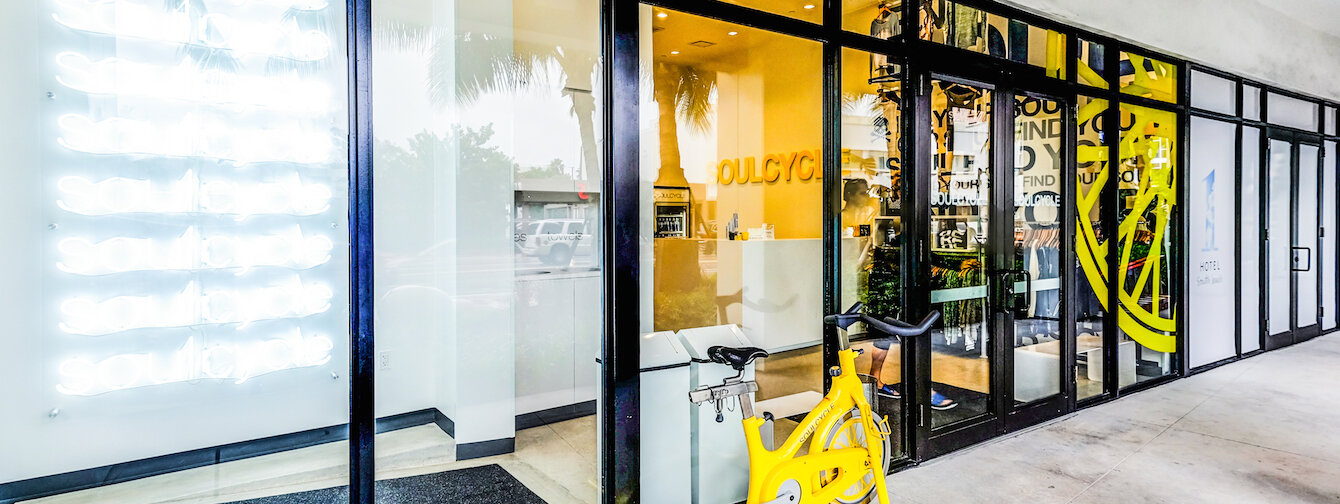Designing a hotel gym or resort fitness facilities
INTRODUCTION TO HOTEL GYM DESIGN
Designing a successful hotel gym layout or fitness facilities for a resort is quite a different skill set to being, say, a hotel architect or designer, despite the understandable desire on the part of such firms to own the gym space creatively as well as the common areas, rooms and hospitality spaces.
It’s no surprise that most hotels simply give the exercise space or yoga studio over to an equipment supplier, install lighting and air con, neutral flooring and the job is done; gym designers are nowhere to be seen.
It therefore takes a certain type of hotel or resort to seek out a specialist hotel gym designer to go one step further and really consider the gym design architecture.
This was the case for us when Singita Safari lodges contacted us back in 2018, and again with our current client work in Italy for a new sustainable luxury wellness hotel brand opening in 2021.
VIU Hotel, milano gym design - wood flooring, neutral grey walls and ceiling, Technogym equipment
DO HOTELS NEED A SPECIALIST GYM DESIGNER?
In our experience with gym design, the most likely candidates for seeking out a specialist hotel gym designer are high-end hospitality brands, and those with an existing connection to wellness, health or a natural lifestyle.
They may be looking to upgrade their gym offer to become a Unique Selling Point, rather than simply following the usual option of a lower-ground, space with no natural light packed full of Technogym cardio and strength equipment.. sound familiar?
Luxury hotels and resorts increasingly see the standard of gym and fitness studio that their guests are using when at home in their primary residence, then compare that with the gym experience on offer at their property and realise the gap is too wide to ignore.
DEFINING A CONCEPT FOR A HOTEL GYM
Not every successful hotel gym is created equal. We have identified a number of ways to differentiate a hospitality fitness offer and to add value to the guest experience whilst ensuring a hotel stands out from the crowd in a competitive market.
The key component is a well defined gym concept that connects the hotel guest’s fitness preferences and their expectations of what a hotel gym will do for them, with the personality of the hotel in question.
This can be a delicate balancing act but all too often the default mode is to go with the classic Technogym equipment set-up with mirrored walls, TV screens, bright lighting and an aggressive air con system. This is pure vanilla, you could literally be in any hotel gym in the world. Guest motivation levels will likely fall off a cliff and workout times will drop. The industry can and should do better.
Go too far in the other direction though and the risk is that a guest feels lost, uncertain or out of place in the gym. Luxury hotels are about frictionless guest experiences, meaning this could become a pain point assuming no staff are on hand to explain how everything works.
soul cycle fitness studio design, 1 hotel south beach, miami
BRANDED HOTEL GYM CONCEPTS
Just as branded F&B concepts provide hotel operators with the halo effect of being associated with a world-class dining concept, a big name gym or fitness studio brand can do something similar if chosen well.
Having a cult fitness name such as SoulCycle operating a spinning studio at street level no doubt helped 1 Hotel South Beach, Miami to foster closer links amongst a certain local demographic for example, whilst also providing hotel guests with an on-site solution for the type of experiential workout they are used to at home - and the polar opposite of a solo workout in a soulless hotel gym!
London’s BXR, a boutique fitness concept built around boxing’s heavyweight champion Anthony Joshua, collaborated with Daios Cove Resort in Crete to create a retreat concept complete with a dedicated on-site functional fitness training area on a converted outdoor tennis court.
This is an example of a software-heavy proposition, where there is in fact relatively little hotel gym design in the collaboration, meaning less CAPEX into hardware for the hotel.
Where BXR delivers a killer jab-hook-cross however is with its aspirational positioning, expert boxing / conditioning coaches and an existing tribe of loyal followers in London, ensuring the Daios hotel can tap into a new market segment during its quieter shoulder seasons.
functional fitness gym by at six hotel, stockholm
HOTEL GYM FLOOR SPACE - HOW BIG IS BIG ENOUGH?
A lowest common denominator approach would suggest that 50m2 is sufficient floor space for a modestly sized boutique hotel of up to around 50 rooms. Given this is not a revenue generating facility, the inclination is to prioritize a spa or treatment room first, squeezing the gym into whatever corner is left once priority has been given to sales revenues. This is an all too common conundrum. Our response is usually - “well, let’s make the gym so great that it has a direct, positive impact on the guest’s stay!”
There are of course gym usage formulas we could propose for how big a hotel gym design should be based on the total number of rooms, average hotel occupancy and an estimate of how many or what % of guests actually make it to the hotel gym during their stay (probably far less than you’d imagine.. especially in spaces with no visible signs of an interior designer being involved!).
This approach does not account for less tangible factors though, such as a boutique hotel owner’s passion for fitness, or a resort’s particular brand.
As a rule of thumb however, a gym needs to be a minimum of 25m2 and only really becomes a genuine feature from around 50m2, whilst at the other end of the spectrum, even the most generous resort gyms are not going to offer more than 500m2 in total including an allocation for a swimming pool.
A new generation of dedicated fitness hotels such as Equinox Hotels are challenging that distinction, integrating fitness into the guest experience at various touch points during the customer journey. For most boutique size hotels however, an allocation of around 100m2 for a gym is a reasonable figure to aim for.
BXR retreat outdoor hotel gym design, crete
THE HOTEL GYM EQUIPMENT QUESTION
Gym equipment suppliers will, perhaps understandably, sell as much of their equipment as possible to a less-informed hotel owner, insisting on the presence of endless isolation weight machines, from leg extensions, to leg curls, chest press and lat pull down machines.
The trend towards more open space in gym design does not sit well with a sales rep on commission. So what’s the answer? Hire a specialist hotel gym designer who is paid to create and implement a unique gym concept, ensuring a more neutral perspective on what equipment needs to be in the hotel gym.
For example, a functional fitness inspired facility would focus on cardio machines, free weights, movement areas and a rig for attaching equipment to - be it a punching bag, ropes, or a loaded barbell. This negates or at least drastically reduces the need for isolation machines, meaning a lower overall CAPEX investment that more than covers the hotel gym designer’s fees.
For the right kind of hotel with a younger, urban demographic, this type of concept would be far more in line with the type of training they are used to. See the above image from the At Six Hotel in Stockholm for an example of how to get it right.
On the other hand, clearly this would NOT be applicable for a classic 5-star hotel gym design oriented towards a more mature demographic who may be working around injuries or limited mobility - in which case, a wider selection of cardio machines would be in order, as well as some isolation machines and perhaps more space given over to mobility and balance work.
To enquire about our hotel gym design services contact us via email here.



